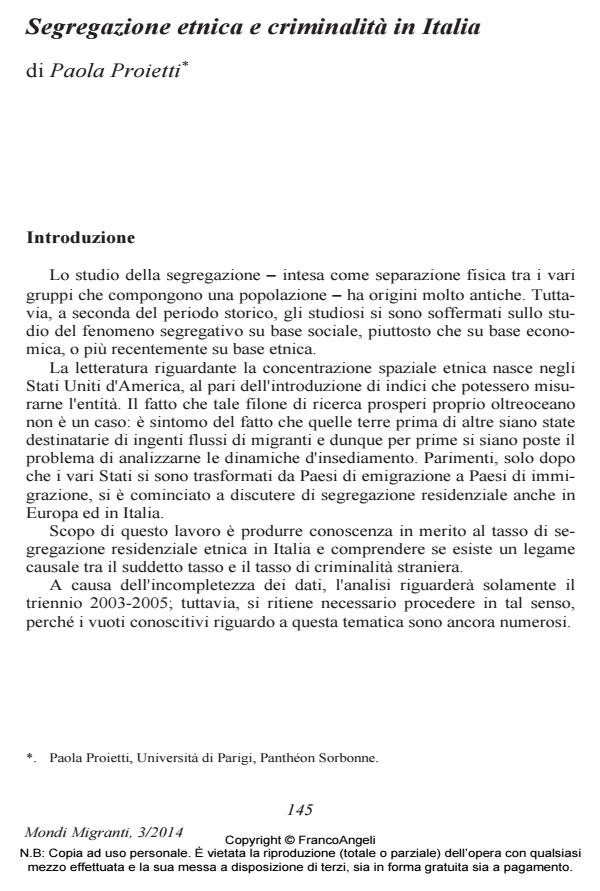Ethnic Segregation and Crime in Italy
Journal title MONDI MIGRANTI
Author/s Paola Proietti
Publishing Year 2015 Issue 2014/3
Language Italian Pages 32 P. 145-176 File size 292 KB
DOI 10.3280/MM2014-003009
DOI is like a bar code for intellectual property: to have more infomation
click here
Below, you can see the article first page
If you want to buy this article in PDF format, you can do it, following the instructions to buy download credits

FrancoAngeli is member of Publishers International Linking Association, Inc (PILA), a not-for-profit association which run the CrossRef service enabling links to and from online scholarly content.
This paper aims at measuring ethnic residential segregation in Italy and assessing the relationship between this variable and the immigrants' tax of crime. I found a moderate segregation level and a "U-shaped" relationship between segregation and crime with a specific negative effect during the 2003-2005 period.
Keywords: Ethnic; enclaves; segregation; crime; immigrants; spatial
Paola Proietti, Segregazione etnica e criminalità in Italia in "MONDI MIGRANTI" 3/2014, pp 145-176, DOI: 10.3280/MM2014-003009